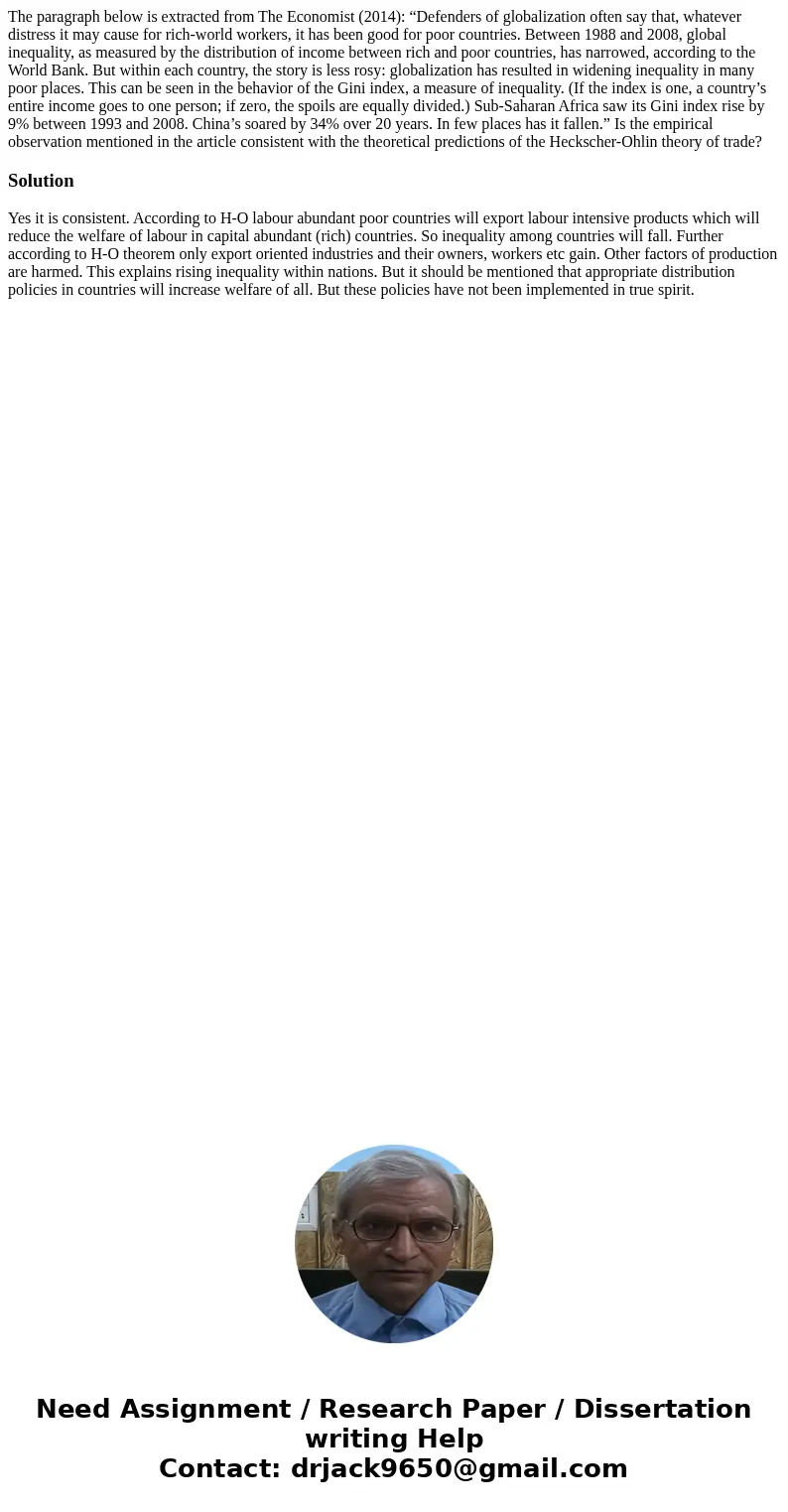The paragraph below is extracted from The Economist 2014 Def
The paragraph below is extracted from The Economist (2014): “Defenders of globalization often say that, whatever distress it may cause for rich-world workers, it has been good for poor countries. Between 1988 and 2008, global inequality, as measured by the distribution of income between rich and poor countries, has narrowed, according to the World Bank. But within each country, the story is less rosy: globalization has resulted in widening inequality in many poor places. This can be seen in the behavior of the Gini index, a measure of inequality. (If the index is one, a country’s entire income goes to one person; if zero, the spoils are equally divided.) Sub-Saharan Africa saw its Gini index rise by 9% between 1993 and 2008. China’s soared by 34% over 20 years. In few places has it fallen.” Is the empirical observation mentioned in the article consistent with the theoretical predictions of the Heckscher-Ohlin theory of trade?
Solution
Yes it is consistent. According to H-O labour abundant poor countries will export labour intensive products which will reduce the welfare of labour in capital abundant (rich) countries. So inequality among countries will fall. Further according to H-O theorem only export oriented industries and their owners, workers etc gain. Other factors of production are harmed. This explains rising inequality within nations. But it should be mentioned that appropriate distribution policies in countries will increase welfare of all. But these policies have not been implemented in true spirit.

 Homework Sourse
Homework Sourse